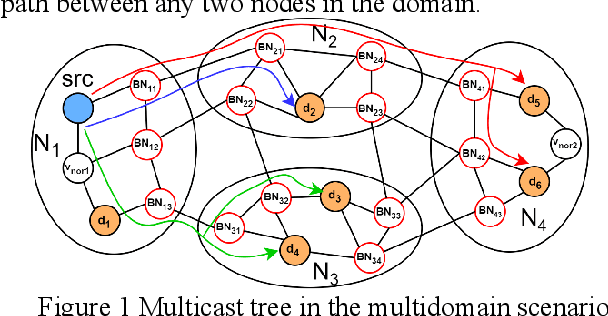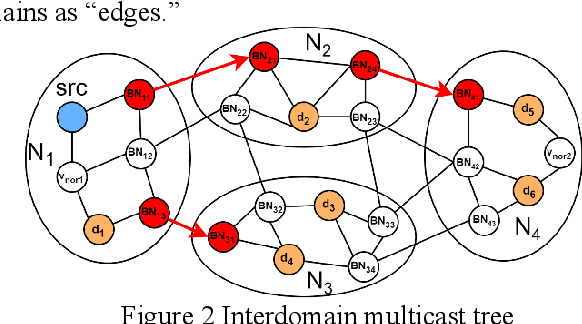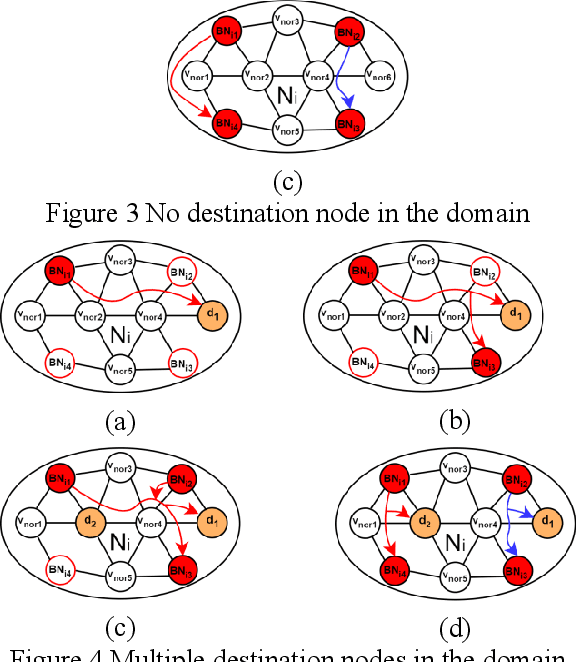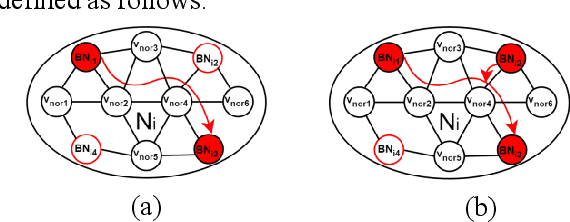Yuping Wang
UniOcc: A Unified Benchmark for Occupancy Forecasting and Prediction in Autonomous Driving
Mar 31, 2025Abstract:We introduce UniOcc, a comprehensive, unified benchmark for occupancy forecasting (i.e., predicting future occupancies based on historical information) and current-frame occupancy prediction from camera images. UniOcc unifies data from multiple real-world datasets (i.e., nuScenes, Waymo) and high-fidelity driving simulators (i.e., CARLA, OpenCOOD), which provides 2D/3D occupancy labels with per-voxel flow annotations and support for cooperative autonomous driving. In terms of evaluation, unlike existing studies that rely on suboptimal pseudo labels for evaluation, UniOcc incorporates novel metrics that do not depend on ground-truth occupancy, enabling robust assessment of additional aspects of occupancy quality. Through extensive experiments on state-of-the-art models, we demonstrate that large-scale, diverse training data and explicit flow information significantly enhance occupancy prediction and forecasting performance.
Can Large Vision Language Models Read Maps Like a Human?
Mar 18, 2025Abstract:In this paper, we introduce MapBench-the first dataset specifically designed for human-readable, pixel-based map-based outdoor navigation, curated from complex path finding scenarios. MapBench comprises over 1600 pixel space map path finding problems from 100 diverse maps. In MapBench, LVLMs generate language-based navigation instructions given a map image and a query with beginning and end landmarks. For each map, MapBench provides Map Space Scene Graph (MSSG) as an indexing data structure to convert between natural language and evaluate LVLM-generated results. We demonstrate that MapBench significantly challenges state-of-the-art LVLMs both zero-shot prompting and a Chain-of-Thought (CoT) augmented reasoning framework that decomposes map navigation into sequential cognitive processes. Our evaluation of both open-source and closed-source LVLMs underscores the substantial difficulty posed by MapBench, revealing critical limitations in their spatial reasoning and structured decision-making capabilities. We release all the code and dataset in https://github.com/taco-group/MapBench.
FwNet-ECA: Facilitating Window Attention with Global Receptive Fields through Fourier Filtering Operations
Feb 25, 2025Abstract:Windowed attention mechanisms were introduced to mitigate the issue of excessive computation inherent in global attention mechanisms. However, In this paper, we present FwNet-ECA, a novel method that utilizes Fourier transforms paired with learnable weight matrices to enhance the spectral features of images. This strategy facilitates inter-window connectivity, thereby maximizing the receptive field. Additionally, we incorporate the Efficient Channel Attention (ECA) module to improve communication between different channels. Instead of relying on physically shifted windows, our approach leverages frequency domain enhancement to implicitly bridge information across spatial regions. We validate our model on the iCartoonFace dataset and conduct downstream tasks on ImageNet, demonstrating that our model achieves lower parameter counts and computational overheads compared to shifted window approaches, while maintaining competitive accuracy. This work offers a more efficient and effective alternative for leveraging attention mechanisms in visual processing tasks, alleviating the challenges associated with windowed attention models. Code is available at https://github.com/qingxiaoli/FwNet-ECA.
Re-Align: Aligning Vision Language Models via Retrieval-Augmented Direct Preference Optimization
Feb 18, 2025Abstract:The emergence of large Vision Language Models (VLMs) has broadened the scope and capabilities of single-modal Large Language Models (LLMs) by integrating visual modalities, thereby unlocking transformative cross-modal applications in a variety of real-world scenarios. Despite their impressive performance, VLMs are prone to significant hallucinations, particularly in the form of cross-modal inconsistencies. Building on the success of Reinforcement Learning from Human Feedback (RLHF) in aligning LLMs, recent advancements have focused on applying direct preference optimization (DPO) on carefully curated datasets to mitigate these issues. Yet, such approaches typically introduce preference signals in a brute-force manner, neglecting the crucial role of visual information in the alignment process. In this paper, we introduce Re-Align, a novel alignment framework that leverages image retrieval to construct a dual-preference dataset, effectively incorporating both textual and visual preference signals. We further introduce rDPO, an extension of the standard direct preference optimization that incorporates an additional visual preference objective during fine-tuning. Our experimental results demonstrate that Re-Align not only mitigates hallucinations more effectively than previous methods but also yields significant performance gains in general visual question-answering (VQA) tasks. Moreover, we show that Re-Align maintains robustness and scalability across a wide range of VLM sizes and architectures. This work represents a significant step forward in aligning multimodal LLMs, paving the way for more reliable and effective cross-modal applications. We release all the code in https://github.com/taco-group/Re-Align.
DiTAR: Diffusion Transformer Autoregressive Modeling for Speech Generation
Feb 06, 2025Abstract:Several recent studies have attempted to autoregressively generate continuous speech representations without discrete speech tokens by combining diffusion and autoregressive models, yet they often face challenges with excessive computational loads or suboptimal outcomes. In this work, we propose Diffusion Transformer Autoregressive Modeling (DiTAR), a patch-based autoregressive framework combining a language model with a diffusion transformer. This approach significantly enhances the efficacy of autoregressive models for continuous tokens and reduces computational demands. DiTAR utilizes a divide-and-conquer strategy for patch generation, where the language model processes aggregated patch embeddings and the diffusion transformer subsequently generates the next patch based on the output of the language model. For inference, we propose defining temperature as the time point of introducing noise during the reverse diffusion ODE to balance diversity and determinism. We also show in the extensive scaling analysis that DiTAR has superb scalability. In zero-shot speech generation, DiTAR achieves state-of-the-art performance in robustness, speaker similarity, and naturalness.
A Privacy-Preserving Domain Adversarial Federated learning for multi-site brain functional connectivity analysis
Feb 03, 2025Abstract:Resting-state functional magnetic resonance imaging (rs-fMRI) and its derived functional connectivity networks (FCNs) have become critical for understanding neurological disorders. However, collaborative analyses and the generalizability of models still face significant challenges due to privacy regulations and the non-IID (non-independent and identically distributed) property of multiple data sources. To mitigate these difficulties, we propose Domain Adversarial Federated Learning (DAFed), a novel federated deep learning framework specifically designed for non-IID fMRI data analysis in multi-site settings. DAFed addresses these challenges through feature disentanglement, decomposing the latent feature space into domain-invariant and domain-specific components, to ensure robust global learning while preserving local data specificity. Furthermore, adversarial training facilitates effective knowledge transfer between labeled and unlabeled datasets, while a contrastive learning module enhances the global representation of domain-invariant features. We evaluated DAFed on the diagnosis of ASD and further validated its generalizability in the classification of AD, demonstrating its superior classification accuracy compared to state-of-the-art methods. Additionally, an enhanced Score-CAM module identifies key brain regions and functional connectivity significantly associated with ASD and MCI, respectively, uncovering shared neurobiological patterns across sites. These findings highlight the potential of DAFed to advance multi-site collaborative research in neuroimaging while protecting data confidentiality.
Audio-CoT: Exploring Chain-of-Thought Reasoning in Large Audio Language Model
Jan 13, 2025



Abstract:Large Audio-Language Models (LALMs) have demonstrated remarkable performance in tasks involving audio perception and understanding, such as speech recognition and audio captioning. However, their reasoning capabilities - critical for solving complex real-world problems - remain underexplored. In this work, we conduct the first exploration into integrating Chain-of-Thought (CoT) reasoning into LALMs to enhance their reasoning ability across auditory modalities. We evaluate representative CoT methods, analyzing their performance in both information extraction and reasoning tasks across sound, music, and speech domains. Our findings reveal that CoT methods significantly improve performance on easy and medium tasks but encounter challenges with hard tasks, where reasoning chains can confuse the model rather than improve accuracy. Additionally, we identify a positive correlation between reasoning path length and accuracy, demonstrating the potential of scaling inference for advanced instruction-following and reasoning. This study not only highlights the promise of CoT in enhancing LALM reasoning capabilities but also identifies key limitations and provides actionable directions for future research.
OpenEMMA: Open-Source Multimodal Model for End-to-End Autonomous Driving
Dec 19, 2024Abstract:Since the advent of Multimodal Large Language Models (MLLMs), they have made a significant impact across a wide range of real-world applications, particularly in Autonomous Driving (AD). Their ability to process complex visual data and reason about intricate driving scenarios has paved the way for a new paradigm in end-to-end AD systems. However, the progress of developing end-to-end models for AD has been slow, as existing fine-tuning methods demand substantial resources, including extensive computational power, large-scale datasets, and significant funding. Drawing inspiration from recent advancements in inference computing, we propose OpenEMMA, an open-source end-to-end framework based on MLLMs. By incorporating the Chain-of-Thought reasoning process, OpenEMMA achieves significant improvements compared to the baseline when leveraging a diverse range of MLLMs. Furthermore, OpenEMMA demonstrates effectiveness, generalizability, and robustness across a variety of challenging driving scenarios, offering a more efficient and effective approach to autonomous driving. We release all the codes in https://github.com/taco-group/OpenEMMA.
Seed-Music: A Unified Framework for High Quality and Controlled Music Generation
Sep 13, 2024



Abstract:We introduce Seed-Music, a suite of music generation systems capable of producing high-quality music with fine-grained style control. Our unified framework leverages both auto-regressive language modeling and diffusion approaches to support two key music creation workflows: \textit{controlled music generation} and \textit{post-production editing}. For controlled music generation, our system enables vocal music generation with performance controls from multi-modal inputs, including style descriptions, audio references, musical scores, and voice prompts. For post-production editing, it offers interactive tools for editing lyrics and vocal melodies directly in the generated audio. We encourage readers to listen to demo audio examples at https://team.doubao.com/seed-music .
MA-CDMR: An Intelligent Cross-domain Multicast Routing Method based on Multiagent Deep Reinforcement Learning in Multi-domain SDWN
Sep 11, 2024



Abstract:The cross-domain multicast routing problem in a software-defined wireless network with multiple controllers is a classic NP-hard optimization problem. As the network size increases, designing and implementing cross-domain multicast routing paths in the network requires not only designing efficient solution algorithms to obtain the optimal cross-domain multicast tree but also ensuring the timely and flexible acquisition and maintenance of global network state information. However, existing solutions have a limited ability to sense the network traffic state, affecting the quality of service of multicast services. In addition, these methods have difficulty adapting to the highly dynamically changing network states and have slow convergence speeds. To this end, this paper aims to design and implement a multiagent deep reinforcement learning based cross-domain multicast routing method for SDWN with multicontroller domains. First, a multicontroller communication mechanism and a multicast group management module are designed to transfer and synchronize network information between different control domains of the SDWN, thus effectively managing the joining and classification of members in the cross-domain multicast group. Second, a theoretical analysis and proof show that the optimal cross-domain multicast tree includes an interdomain multicast tree and an intradomain multicast tree. An agent is established for each controller, and a cooperation mechanism between multiple agents is designed to effectively optimize cross-domain multicast routing and ensure consistency and validity in the representation of network state information for cross-domain multicast routing decisions. Third, a multiagent reinforcement learning-based method that combines online and offline training is designed to reduce the dependence on the real-time environment and increase the convergence speed of multiple agents.
 Add to Chrome
Add to Chrome Add to Firefox
Add to Firefox Add to Edge
Add to Edge